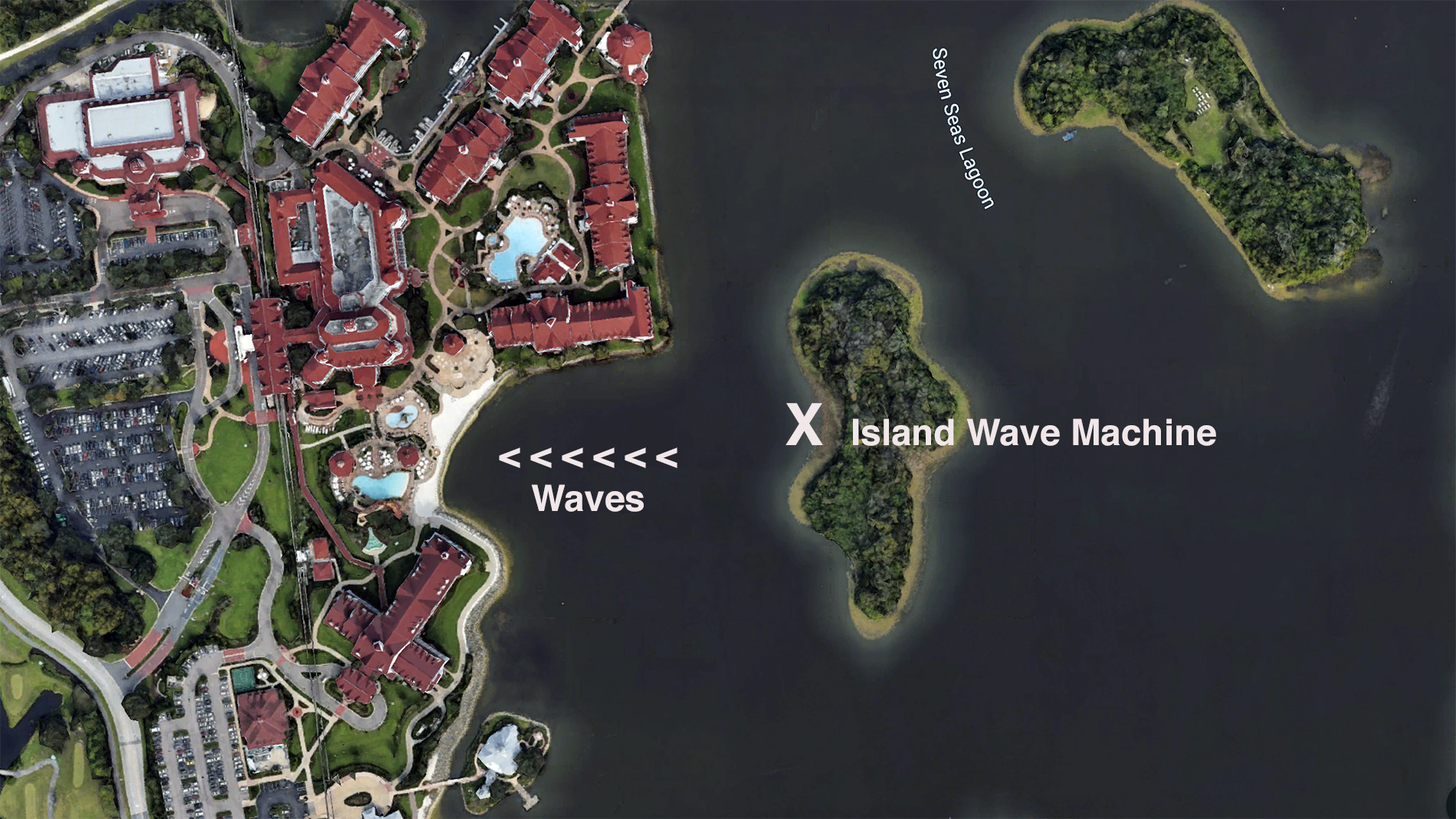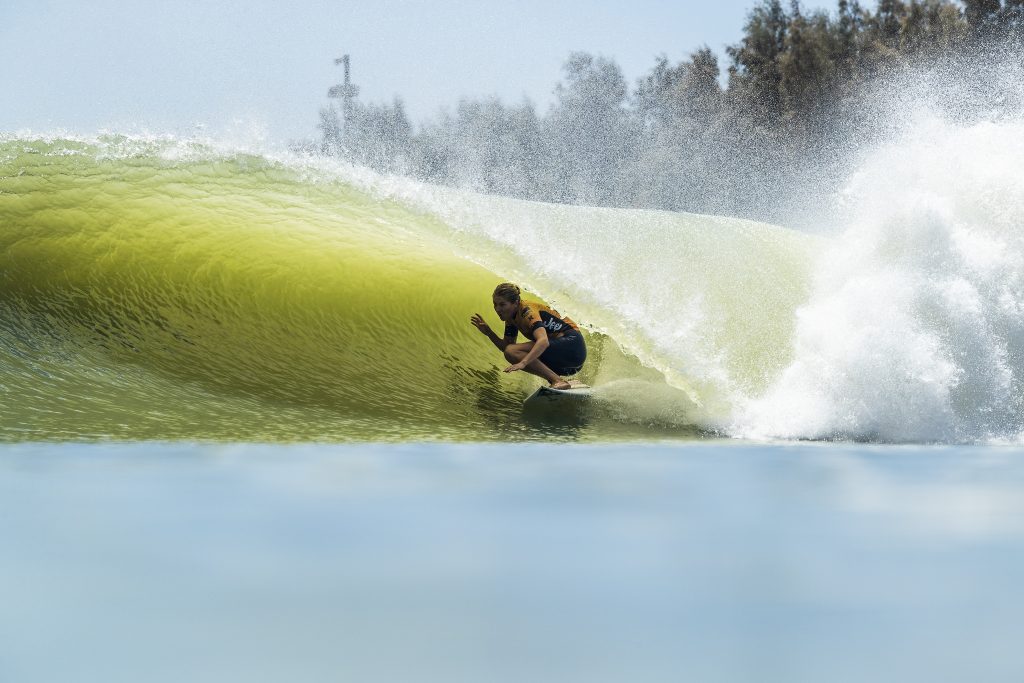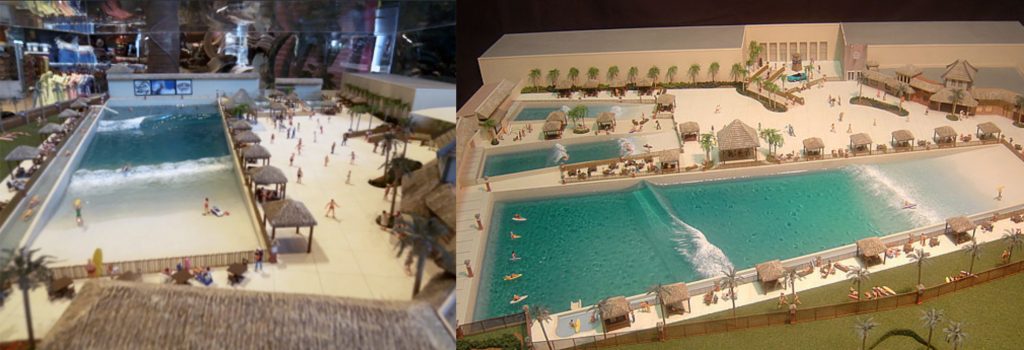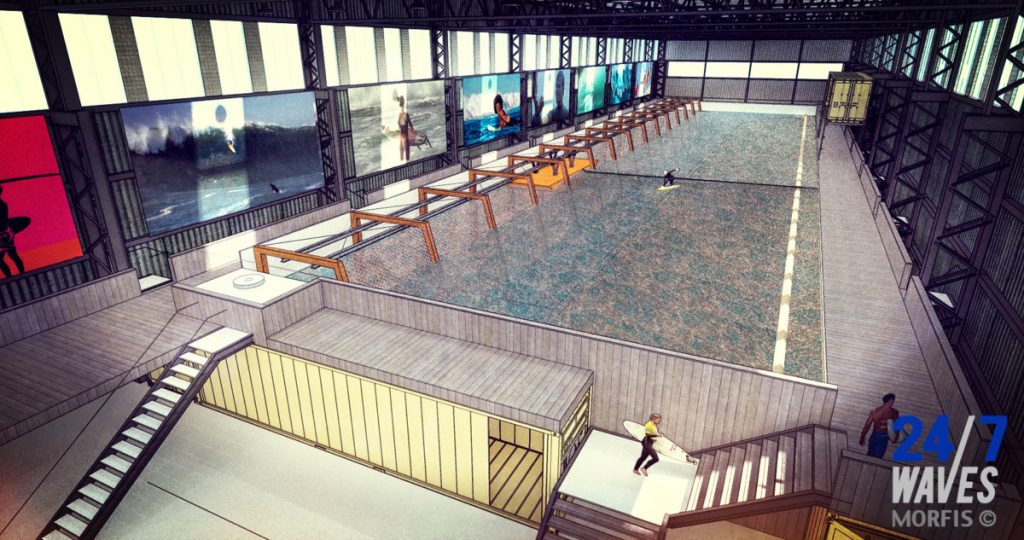Three places of failure that are also the future

Exploring the tumoultuous wave pool thread between Japan, Florida and The Netherlands
Like a well-publicized celebrity breakdown on Twitter, if places have wave-pool mood swings and can throw public tantrums, then our favorite bi-polar entertainers must be Japan, Florida and The Netherlands. All three have stellar examples not only of booming new wave pools but also of projects that have failed or gone missing.
In the early 1970s, Disney built a great wave pool. Then destroyed it. Japan built one of the best wave pools for surfing in history. Then scrapped it. A Dutch masterpiece in Rotterdam has simply vanished into thin air. However, all three locations are ripe with the promise of amazing new projects.
Join us as we take an emotional roller coaster ride through three global hotspots that run the full spectrum of wave pool emotions, from disappointment to bliss and everything in between.
Japan
Ocean Dome
This first generation pool had some great waves when the controllers cranked the nobs up to 11. It was the world’s first glimpse into good surf in a wave pool with surf similar to the wedges of the BSR Surf Ranch – but 25 years ago. And indoors. The roof above the Hawaiian-themed beach and pool retracted occasionally but mostly stayed closed to maintain water and air temps in the mid-80s. Extremely popular, the venue saw 1.25 million visitors (none with surfboards) in 1995.
Opened in 1993, this pool in Miyazaki was part of a sprawling Sheraton resort. The waterpark peaked in popularity in the nineties but was scuttled in 2007 to make way for renovations. Because this chlorinated wave pool was not designed specifically for surfing, recorded sessions are rare.

Kobe Reyes
Twenty minutes by car from Kobe Japan is Kobe-Reyes, a Big Surf Arizona type wave that is rarely pushed above waist-high. It’s currently the only surf-specific wave pool in Japan and does a booming business despite the lack of solid surf.
The wave pool features a patented “carry type wave making device” according to the Google Translation of the website. “Not only seeking the height of a simple wave, it adheres to the same principle as the natural sea. The wave pool produces the best A frame.”
Kelly’s and The Cove
Japan is likely to host the best of both proven wave pool technologies at this time, The Cove and a Kelly Slater Wave Company facility. The KSWC wave pool got rushed along in hopes of hosting Olympic surfing.

“We are trying to get a wave facility built in Tokyo in time,” WSL CEO Sophie Goldschmidt told Sports Business Daily. “Hopefully, if we can get it built, there’s a good chance that the Olympics would take place in one of our facilities. I think if we’re able to do that, it’s likely to be the lasting impression of the Tokyo 2020 Olympics.”
However, the International Olympic Committee said that since surfing was proposed as an ocean sport, it must remain an ocean sport for competition. The rush on finishing Kelly’s wave stopped.
But on the upside, Japan is building two new world-class wave pools. Kelly’s wave is eyeing Kisarazu City across the Bay from downtown Tokyo while Wavegarden has stated they have plans for a Cove wave pool in the land of the rising sun.
Florida

Disneyland
When Disney Florida developed Polynesian Village in the early 1970s the company also built a sophisticated wave machine. It worked great, pumping out surf across the customized Seven Seas Lagoon. (See main image top of story). The wave generation came from a device anchored to a small man-made island that sent waves to a nearby beach. Disney had planned to hold surfing “exhibitions” and contests. What they didn’t plan on was the wave action eroding the expensive man-made beaches. The company pulled the plug on the wavemaker and the lake remains surf-less to this day.
Ron Jon Surf Park
Three decades later, Ron Jon Surf Shop would invest millions into a wave pool that self-destructed. The Ron Jon Surf Park was all set to become the world’s first surf-specific wave pool. The project included customizable bathymetry, so wave shape could change with the contour of the pool bottom at the push of a button. It didn’t go as planned.
“Engineers failed to account for the tremendous pressure exerted downward when waves break,” says wave pool developers
Typhoon Lagoon
Florida’s biggest wave pool success currently is Disney’s Typhoon Lagoon. The pool generates roughly one 6-foot-wave every 90 seconds, a burgery right and left off the deep end that rushes into a closeout on the inside bar. Completed in 1989 it caught the world’s attention as developers activity courted surfers for specialty events and marketing. It was Kelly Slater’s first wave pool experience. You can rent the pool for private sessions before or after daytime business hours. During a 3-hour session, you’ll get 100 waves. The renter gets to choose the wave settings.
“It takes a little bit to get used to,” says snowboard legend Todd Richards. “The way the wave breaks you really have to know where it’s going to give you the push. The energy it does have is really narrowed into one spot so you have to know where that one spot is.”
Last year the Kelly Slater Wave Company announced that they will build a Kelly’s wave in Palm Beach Florida. Wavegarden also announced plans for a Cove development.
Holland

Steigersgracht Canal
The Netherlands is super frothy for surfing. Scheveningen is the country’s surf city. Flat throughout most of the year, this North Sea town only turns on during winter tempests when water temps can dip down to 40 degrees Fahrenheit. On a blustery day with confused waist-high peaks, you can find a packed lineup hustling it out along the main jetty.
The well-documented Waveloch project, dubbed Rif010 Water Sports Arena, in nearby Rotterdam was projected to be completed by 2016. Designed by Flowrider creator Tom Lochtefeld, the surf machine would produce peelers between two bridges along the Steigersgracht Canal. Lochtefeld’s SurfPool system would throw out a top-to-bottom 5-foot wave every 8 seconds followed by a beginner wave roughly half that size.
After 2016 all information on the project stopped, leaving us to conclude that one of the many links necessary to complete the Dutch wave pool chain, had broken. But the artists’ renderings were impressive and changed our collective view of still bodies of water. Thanks to Lochtefeld,
Surf Poel
On the upside to Dutch wave pools, the innovative Surf Poel project under construction in The Hague is on track to finish as of this writing. The system uses a customized foil design running along a track inside a warehouse. The members-only indoor surf spot will be heated and kitted out with the usual amenities.

Trackback from your site.
Related Coverage
